Category: Indian Himalayas
Hemis Festival Ladakh Photo Essay
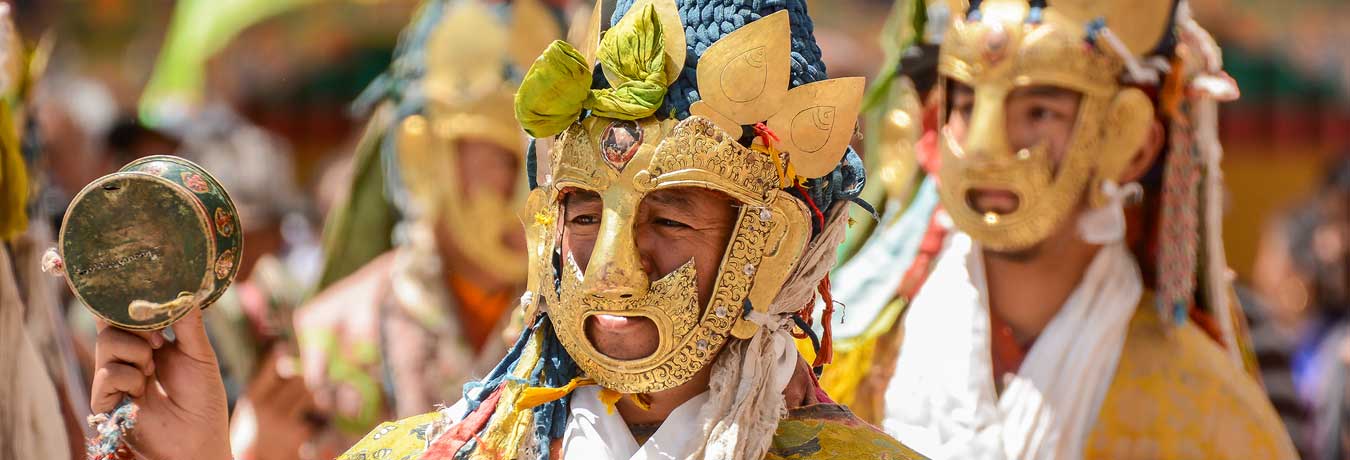
The Hemis Festival is a spectacular two-day event celebrated on the courtyard of the Hemis Monastery, situated 25 miles southeast of the town of Leh in Ladakh. It is the biggest and oldest monastery in the region (built in the 11th century). Every year, culture curious travelers and locals throng this ancient monastery to commemorate the birthday of Lord Padmasambhava (Guru Rinpoche), the founder of Tibetan Tantric Buddhism. This two day extravaganza falls every year on the 10th day of the Tibetan lunar month. Visitors can enjoy a fascinating mask dance performed by the monastery lamas to the accompaniment of drums, cymbals and long horns. It is a sight to behold and in this photo essay we have made an effort to share some beautiful images of the mystical Hemis Festival.
The festival will be celebrated on the 15th of July this year. Contact us if you want a tailor made itinerary to attend this spectacular event in the transcendental Himalayan land of Ladakh.
Zuley!
Images from the Hemis Festival
All the above images of Hemis festival have been sourced from Instagram.com to visually transport you to this grand event. To know more about festivals in Kashmir & Ladakh Valley use the comment box or write us at enquiry@indusdiscoveries.com
How Safe Is Traveling In Kashmir to Tourists – The Actual Reality
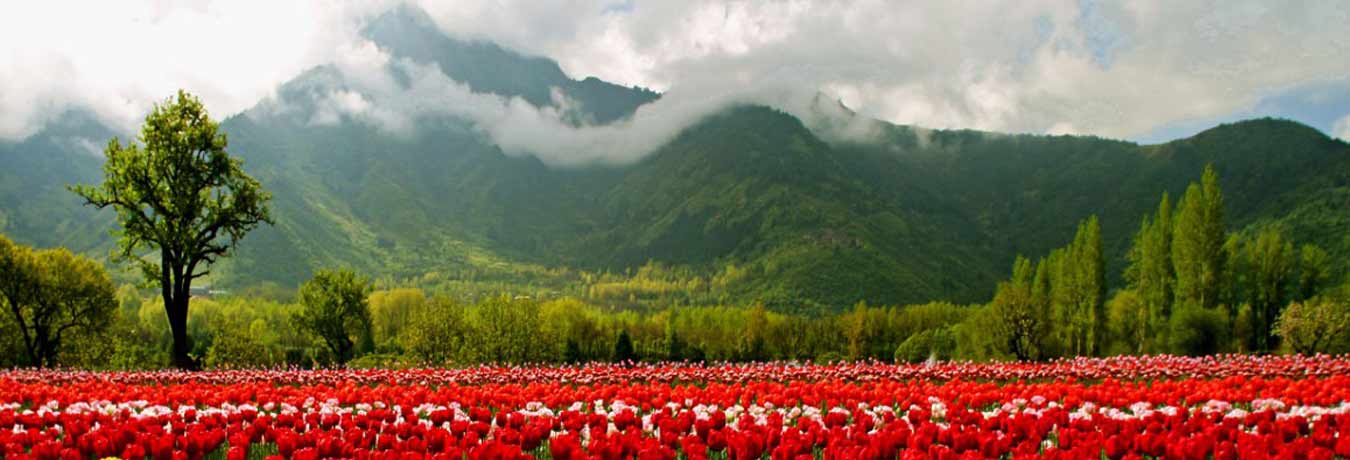
There might be few doubts and repercussions in your mind, when it comes to traveling in Kashmir as it is prone to civil unrest and violence. Well, all we have got to say is Kashmir knows how to treat their guests. Alike all of India – Kashmir also believes in “Atithi Devo Bhava” Or every tourist is God incarnated.
@IndusDiscovery It is the media that wants to portray that. Kashmir is heaven, everywhere.@AboutIndia@Hippie_InHeels@lakshmisharath
— Shubham Mansingka (@travelshoebum) May 30, 2016
Popularly acknowledged as “Switzerland of India” and “heavens on earth”, Kashmir is a destination that will never fail to attract tourists. The mind boggling views of exquisite gardens and snow clad mountains can make this state probably the most sought after tourist place in India. But unfortunately a place which was once a top visited destination by foreigners now attracts very few travelers from abroad.
Many people from different parts of this globe have shown interest in traveling to Kashmir during their India Vacation. Post 2010, the tourism industry in Kashmir has boomed among the globe trotters but according to the Union Tourism Ministry, J&K has received only 1% of the 80,00,000 tourist arrivals in India 2015.

For us traveling in Kashmir is all about floating houseboats, complete panoramic views, lush greenery and views that you just cannot take your eyes off from. Apart from that, the craggy terrains, inclined meadows, arrogant hills and astounding mountains offer a range of adventure activities like rock climbing, trekking, skiing, camping, Paragliding and snowboarding that people can enjoy while traveling in Kashmir.
As travel and tourism is a thriving affair in Kashmir, there are numerous tourism guides available for reference. Besides, tourists can also opt for tailor made tours offered by different local tour operators in planning the best out of traveling in Kashmir. Considering the importance of this beautiful state, The Lonely Planet Magazine India Travel Awards 2016 has awarded this state as the most romantic state in India. Some of the popular tourist destinations of this site include: Pahalgam, Srinagar and Gulmarg
How safe is traveling in Kashmir – Several Informative Details
People often consider safety as an important issue while it comes to traveling in Kashmir. A special police force, called the “Tourist Police” is posted at all important tourist points in Kashmir. The force is headed by the Superintendent of Police himself in order to ensure prevention of any kind of harassment to tourists. The Indian Government has also enacted a special law called the “J&K Registration of Tourist Trade Act”.
Under this act, “some officers of the Tourism Department have been vested with magisterial powers, including the power of compounding, in case of cheating, overcharging, harassment, pestering, toting, etc. faced by tourists. Tourists are urged to contact the nearest tourism officer or the Deputy Director Tourism (Enforcement), with complaints, if any, or for solving problems faced by them.” – [http://www.jkpolice.gov.in/public-advisories/safety-tips-for-tourists.htm]

With residents, who are very friendly, warm, polite and respectful the state just lives on to be a traveler’s paradise. And there’s more! Another exciting fact about the valley is; Kashmiri’s happen to be really good hosts. Whether it is the tourist guide or the local crowd, everyone is really nice.
Even Sharell Cook, India Expert of About.com (travel) feels the same. Check what she has to say about her Kashmir visit .
@IndusDiscovery @Hippie_InHeels @travelshoebum @lakshmisharath I didn’t feel that it was unsafe when I visited a couple of years ago.
— Sharell Cook (@AboutIndia) May 30, 2016
Note: It is highly recommended to stay in constant touch with a your local tour operator and to discuss briefly about the itinerary and route map before your arrival. Do not travel by road from Delhi or any other actual place of your arrival in India and only travel by air to Sri Nagar.
Information On The Popular Tourist Destinations In Kashmir
The magnificence of this amazing state, lying in the bosom of the Himalayas is reflected in its beautiful cities of,

Srinagar: Featuring the beautiful Dal Lake and the snow clad Himalayan range, Srinagar is truly the summer capital of India and offers a range of wonderful tourist destinations to travelers. This city also attracts a large number of tourists from India and abroad. This also happens to be one of the places that will make you feel safe with its warmth. Capacitated with lakes, Mughal Gardens, handicrafts and houseboats, Srinagar always ready to “wow” you whenever you set foot in its precinct. The beautiful lakes of this city nestled in the peaks of Pir Panjal ranges are famous for leisure rides in houseboats and shikaras.
Apart from the above mentioned places, there are some other tourist attractions in this state like as the Nishat Bagh, Chashme Shahi Bagh, the Tulip Garden, Shankaracharya Temple and Hazratbal Dargah.

Gulmarg: Located around 70 kms away from Srinagar, Gulmarg is a tourist destination known for its scenic beauty and enchanting tourist attractions. Located 8825 feet above from the sea level, this destination offers complete panoramic views of the snow capped Mountain Apharwat peaks and an amazing scenic beauty of the surrounded valleys. Famous all around for adventurous activities and natural beauty, Gulmarg works as the ideal summer retreat for tourists both in and outside of this country. There are a number of activities that tourist can do to enjoy their stay while traveling in Kashmir. One of these is to take the cable car to experience the mesmerizing scenery created by nature or frolicking in the snow. Though the Pakistan border is just a 30 minutes hike from this place, but still Gulmarg happens to be one of the safest places known in Kashmir. Gulmarg is also considered as one of the highest skiing resorts in India with the availability of hilly slopes ranging between 8,700 and 10,500 feet.

Sonamarg: Sonamarg is yet another marvel situated in the heart of a valley carved by the Sind River. Also known as the Meadow of Gold, this destination includes a breathtaking drive on the mesmerizing Srinagar-Ladakh highway. In this place, the nature is just at its poetic best and encourages tourists to trek to the Thajiwas Glacier. While spending their holidays in Kashmir, the travelers can choose to stay at any of the meadows at night under the starlit skies to feel complete peace and totally cocooned. To get the most updated news about the present situation of Sonamarg, tourists can consult with local tour operator or just take a glance at local news channels.
 Pahalgam: Nestled beside the Lidder River, Pahalgam is another serene and quaint town famous for its beauty all over the Kashmir Valley. This is actually a rural valley, which depicts the true picture of virgin nature. This place also unveils extensive meadows, breathtaking views of pine forests, the gorgeous Lidder River and snow capped mountains. All these features make this place a preferred destination for Bollywood filmmakers. Besides, this place is also the base point of different popular treks like as Chandanwari, Kolahoi Glacier etc. One of the best attributes of Pahalgam is its weather. This place remains cool even in the peak summer season always presenting a welcoming mood to all its visitors.
Pahalgam: Nestled beside the Lidder River, Pahalgam is another serene and quaint town famous for its beauty all over the Kashmir Valley. This is actually a rural valley, which depicts the true picture of virgin nature. This place also unveils extensive meadows, breathtaking views of pine forests, the gorgeous Lidder River and snow capped mountains. All these features make this place a preferred destination for Bollywood filmmakers. Besides, this place is also the base point of different popular treks like as Chandanwari, Kolahoi Glacier etc. One of the best attributes of Pahalgam is its weather. This place remains cool even in the peak summer season always presenting a welcoming mood to all its visitors.
To get the most updated news about the present situation of Pahalgam, tourists can consult with their local tour operator.
To know more about the different destinations in Kashmir valley and safety in Kashmir for travelers you can check this blog from makemytrip.com called How safe is Kashmir for Tourists?
Conclusion:
Kashmir, is that state of the Indian Sub-continent, which, if not explored, leaves your tour incomplete. Not only is the state a feast for your eyes, it presents your soul the much-needed rejuvenation and refreshment needed for you to get back to the force of life. With its magnificently awesome surroundings and views, Kashmir comes with all the tourist attractions to which the travelers get attracted to. Make sure your bucket list have Traveling in Kashmir this season by all means if you want your life reinforced with renewed enthusiasm and vigor.
To know more about the current situation in Kashmir and places to visit in the valley please fill the form after clicking on the link.
Now let this video about Jammu & Kashmir tourism do all the talking:
Why You Must Visit Shimla in June
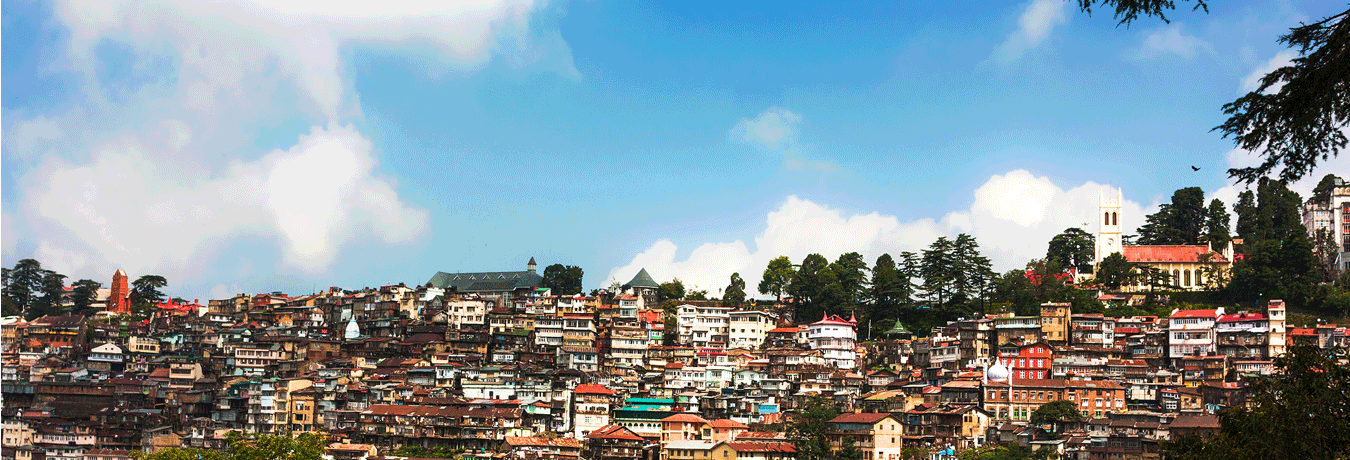
Flanked by forested hillsides from all directions, it would be apt to say that Shimla is the official summer holiday destination of India. It is the capital city of the Indian state of Himachal Pradesh, located in northern India. Shimla was declared as the summer capital of British India in 1864. After India gained independence, this city became the capital of Punjab, another northern state of India and was later named the capital of Himachal Pradesh. Due to the surge in the arrival of tourists in the summer season, Shimla becomes a hub of many activities – especially during the month of June. Himachal Pradesh Tourism Development Corporation also organises some special events during this month to make it a memorable experience for the tourists. So, let’s talk about the main attractions of Shimla and why you should visit this beautiful hill station during the month of June.
Shimla Summer Festival
It is the most important festival of this hill-station, which is celebrated in the first week of June. It is celebrated to welcome the summer season each year. This festival showcases the rich cultural heritage and history of Himachal Pradesh. The Shimla Administration Officials have been organizing this event since 1960 and each year they add new attractions to it. This festival is organized at the Ridge of Shimla. To cater to people of all age groups, many fun-filled activities are also conducted such as musical performances, family games, live theatre, recitals, fashion shows, talent competitions, magic displays, and cultural programs.

Weather
Situated at an altitude of 2,202 meters, Shimla has the subtropical highland climate. While the winter season brings the extremely cold climate in Shimla, it turns into a pleasant weather during the month of June, when the temperature remains between 15°C to 30°C. But, you might have to put on light woolens in the evenings.
Board the Shimla-Kalka Toy Train
Shimla-Kalka Toy Train is a UNESCO World Heritage site and it was built by the British in 1903 to get an easy access to their summer capital Shimla. This train runs for 60 miles through 20 railway stations, 103 tunnels and 864 bridges – the longest tunnel is located near the main railway station at Barog and it is 1.2 km long. Three toy train services run on this track that are named as the Himalayan Queen, the Shivalik Deluxe Express and the Rail Motor Car. It is one of the most scenic train journeys in India, which is endowed with some scintillating views.
Visit Lakkar Bazaar
The famous Lakkar Bazaar of Shimla is located on the eastern side of the Ridge road. Here you can buy the best in local wooden handicrafts. Some of the most popular products which are sold here are wooden toys, trays, pen stands and key rings among others. Hikers also flock to this market to buy wooden walking sticks, which are used for climbing the hilly areas.

Visit Woodville Palace Hotel
Located at a height of around 7000 feet above the sea level, the Woodville Palace Hotel is originally known as the Jubbal Palace. This palace was the residence of the royal family of Jubbal until the year 1977. Spread over 170,000 square feet of land, this palace is complemented by majestic deodar and pine forests. Besides its location, another interesting aspect of this palace is its Indo-Chinese architecture. One can also enjoy a drink or two here at the 1930’s themed Hollywood Bar that has a wall decorated with the signed photographs of the yesteryear Hollywood film stars like Greta Garbo, Spencer Tracy, Clark Gable, Laurel and Hardy, and Katherine Hepburn.
Enjoy Street Food of Shimla
There is a lot of variety of street food in Shimla, as many local shops and stalls serve some mouth-watering local delicacies. One of the most prominent shops is the Bhihari Lal Sharma Stall, which is situated at the Takka Bench above The Ridge. Bhihari Lal was the first fruit chaat seller in the city and he started his shop in 1948. One can enjoy yummy and healthy fruit chaats, served with spicy chutneys. The Verma Tea Stall and Kewal Ka Dhabba, located at Chawda Maidan, serve the delicious butter bun with tea. The Sita Ram and Sons dhaba, located at the Lakkar Bazaar is famous for serving the best channa bhatura in Shimla.

Sightseeing Spots
The prismatic hills of Shimla attract many tourists every year. From adventure enthusiasts to common travellers, there is something for everyone in Shimla. Some of the places, which are worth exploring in Shimla are: Arki Fort, Cultural Complex, Observatory Hill, Gaiety Heritage, Viceregal Lodge and Himachal State Museum. On the other hand, some popular tourist places in Shimla are: The Ridge, Jakhu Temple, Christ Church and Hadimba Temple.
Scenic Spots Around Shimla
Mashobra
This place is one of the only two presidential retreats in India, the other one is in Secunderabad. In fact, Mashobra is that hotel, where Lord Mountbatten and Lady Edwina spent some of their last days in India and they were often visited by Jawahar Lal Nehru, India’s first Prime Minister. This majestic building is surrounded by forests of pine, oak, and cedar trees, which are a part of the Shimla Reserve Forest Sanctuary. Savour the stunning views of the snow-capped mountains from here and further explore the trekking trails and wildlife of this place.
The Hattu Peak Temple
The Hattu Peak temple is located around 65 km from Shimla. This place is known for offering some breathtaking views of the Himalayan Valley. Interestingly, to reach this place, you have to cover the last stretch on foot, which makes the whole endeavour more interesting. The Hatu temple is a small building which is complemented by a beautiful pond and fabulous architecture.
How to Reach
By Air: Jubarhati is the nearest airport, about 23 kilometres from the town. There are regular flights going from Jubbarhatti to Chandigarh and Delhi.
By Train: The small railway station in Shimla is just 1 kilometer away from the centre of the town and it is connected to Kalka by a narrow gauge rail track. The famous toy train of Shimla runs between Kalka and Shimla, covering a distance of 96 kilometres in about 7 hours. Kalka station is the nearest rail-head, which is connected to Chandigarh and Delhi by regular trains.
Top Places to Visit in Ladakh

Located at a height of more than 3,000 meters above the sea level, Ladakh is colloquially referred as, ‘a land of high passes’ in Tibetan language and it is a part of the Jammu and Kashmir state of India. The largest town in Ladakh is Leh. Ladakh as a destination can be depicted as a dreamland for visitors seeking captivating scenic beauty and natural wonders. Visualise those snow-capped Himalayan and Karakoram mountain ranges, deep gorges, verdant landscape, gurgling streams and one can conjure up an overwhelming imagery of a landscape – oozing with mystery and intrigue. Far from the urban cacophony, this place is a whole new world, where you can feel close to yourself amidst tranquil ambience and splendid natural beauty. We have picked up some top places in and around Ladakh, which you should visit to explore the best of this land.
Zanskar valley

Zanskar valley is a sub-district of Kargil, which is flanked by the Himalayan Range of mountains and the Zanskar Mountain Range. Inhabited by about 14,000 people, most of them being Buddhists, this valley is one of the remotest parts of Ladakh. This place was named after the Zanskar river, which flows through the valley. It stays closed for about eight months in a year due to heavy snowfall. During winter, one can reach this valley only on foot through a majestic path, made up of a frozen river. The inhabitants of this valley still follow their age-old traditions and culture, which is one of the main attractions for the tourists. Their livelihood revolves around their cattle, as they continue to live a semi-nomadic life. The town of Padum is the largest town in this valley with a population of around 700 inhabitants and the rest of the region is sprinkled with small villages situated on the highlands.
Pangong Lake

Situated at a height of 4,250 meters on the Changtang plateau in the eastern Ladakh region, Pangong Lake or Pangong Tso is one of the largest brackish lakes in Asia. It is also known as a hollow lake and freezes completely during winter, despite its saline water. Around 160 kilometers away from Ladakh and sprawling over an area of around 100 kilometers across the borders of India and China, this magnificent water reservoir appears like a surreal creation of nature. Due to its brackish water, sunlight creates some awe-inspiring visuals of light. During summer, this lake becomes a temporary home for a number of migratory birds such as the Bar-headed goose and Brahmini ducks. One requires a visiting pass from the deputy commissioner of Leh to visit this lake, as it falls under army control.
Tso Moriri Lake
Situated at an altitude of around 4,500 m, Tso Moriri is a fresh-water lake, which is famous for its pristine and exotic setting. This lake is also located in the Changtang plateau in the eastern Ladakh region like Pangong Lake, and it is entirely within India. Officially, this region is called the Tso Moriri Wetland Conservation Reserve. The road journey from Leh to Tso Moriri Lake offers some remarkable views of an altering landscape from a rugged terrain to verdant scenery. This is also one of the favourite places for bird watchers, who visit this lake during the season of summer when many migratory birds make this place their breeding ground such as: the endangered Black-necked cranes, Bar-headed geese, Brown-headed gulls, Great crested grebe and Ferruginous pochard among others.
Lamayuru Monastery

The Lamayuru monastery is one the most beautiful monasteries in Leh-Ladakh. Located at an altitude of around 3500 meters, this is the oldest Tibetan Buddhist monastery, about 127 Kms from Leh. The barren yet beautiful landscape around this monastery creates an atmosphere of the lunar surface. It is maintained by the Red Hat sect of Buddhism, in which monks wear orange robes and perform old rituals. The most stunning aspect of this monastery are caves, which are carved out of the mountains in an exquisite manner. Other attractions of this monastery are wall paintings, murals, scriptures, and Thangkas.
Kargil
Situated on the banks of the Indus River, Kargil is the second largest town in Ladakh, situated 234 kilometers west of Leh. Blessed with a number of scenic attractions, this sleepy town became famous during the 1999 War between India and Pakistan. In the earlier 19th century, Kargil was a busy town, which had a trade route to and from Afghanistan, China, India and Turkey. Overlooking the snow-capped mountains on all sides, Kargil has an old world charm to it and it is considered as a perfect destination for adventure enthusiasts, who can enjoy trekking and mountaineering here.
Nubra Valley

Located around 140 km from Leh, Nubra Valley is a part of the famous Silk Route. This valley is also known as “the valley of flowers” as it is complemented by some rare and beautiful flowers that fill colours in its lush green landscape. It is a land of tranquil atmosphere and everlasting splendour, overlooking the glaciated peaks of the Karakoram Range. This undefiled place presents an awe-inspiring imagery, which appears as if it is taken from the books on modern art. Two rivers named as Nubra and Shyok that pass through the valley sustain the exotic flora and fauna of this place.
Diskit Monastery

Located 120 kilometers away from Leh, Diskit Monastery is also known as Deskit Gompa or Diskit Gompa. This monastery belongs to the Yellow Hat (Gelugpa) sect of the Tibetan Buddhism and founded by Changzem Tserab Zangpo in the 14th century, which makes it the oldest Gompa in the Nubra valley. The main attraction is a golden Buddha statue, which is 32 meters tall and looks majestic amidst the serene ambience. One can also visit Lachung Temple and Hundur Monastery, which are located nearby. There is a massive prayer hall in this monastery, which is complemented by some stunning images of the guardian deities. Every year in the month of February, a festival is organised in this monastery, which is known as the “Festival of the Scapegoat” and attended by the local people. This festival gives insight into the ancient traditions and rituals of Buddhism.
Magnetic Hill

Located about 30 Kms from Leh towards Kargil, this is one of the most fascinating places in Ladakh. It is a small stretch of road, which is known as “Magnetic Hill” or “Gravity Hill” of Ladakh. This curious natural phenomenon occurs due to the unique layout of this area, which creates an optical illusion of the road being uphill, actually, it is a downhill road. In fact, this hill pulls any vehicle towards it with its magnetic force.
Shanti Stupa
The Shanti Stupa is a Buddhist white-domed stupa on a steep hilltop in Chanspa, at a height of around 4200 meters. It was constructed by a Japanese Buddhist Bhikshu Gyomyo Nakamura in 1991, as a part of the Peace Pagoda Mission. This holy place is not only known for providing a stunning panoramic view of the region, but also for holding the relics of the Buddha at its base, which were preserved by the 14th Dalai Lama. One can savour some amazing views of the sunrise and sunset from this Stupa.
Best time to visit: The best time to visit Ladakh is during the summer season of the region, from June until September. The weather stays clear during this period with an average temperature range during the day is about 20–30°C, but it drops sharply at night. During the months of July and August, trekkers head to Ladakh, when the Manali-Leh and Srinagar-Leh highways are open to vehicles.
By Air: Regular fights to Leh from Delhi, Jammu and Srinagar airports.
By Road: There are two routes. Srinagar to Leh and Manali to Leh.
Srinagar to Leh: The 434-km Srinagar-Leh road. This road stays open from mid-May and November. One can also board the buses of the J&K state road transport corporation.
Manali to Leh: The 473-km Manali-Leh road. Open for traffic from around mid-June to early October. One can also board the buses, operated by the Himachal Pradesh tourism and the J&K SRTC.
Enjoy a gratifying and customised trip to Ladakh with us!
Top 10 Must Visit Valleys in India
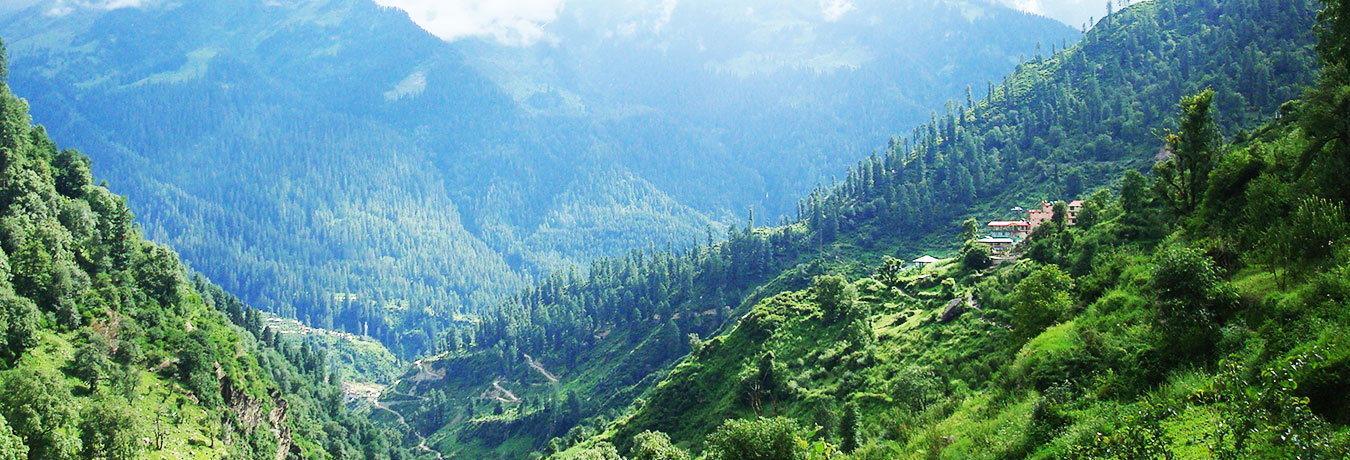
As a traveller, have you ever seen something so intricate, natural, and stunning that it literally swept you off your feet? Visualise a place, which is bestowed with exotic flora and fauna, majestic mountains, and sparkling rivers – we are talking about some stunning valleys of India, which will simply leave you awestruck. Let’s talk about these natural wonders of India, which are worth exploring for any ardent traveller.
Zanskar Valley, Ladakh

Zanskar valley is located in the south-west region of Leh at an altitude of 13,154 ft and spread over an area of 5,000 sq km. This valley is named after the Zanskar River, which flows down from the mountain and waters the rose bushes and other herbal plants in this valley. Nestled amidst snow-capped mountains of the Himalayan range, this is one of the most beautiful valleys in the world. The ravine provides captivating views of the surreal beauty of nature and attracts many tourists. You should know that it remains inaccessible for about 7 months of the year due to heavy snowfall. The Zanskar River freezes and turns into a captivating sheet of snow during winter, which is popularly called as the Chadar trek. A few tourists come here especially in winter to relish the opportunity of trekking on this challenging terrain. Besides that, many visitors come here to explore the ancient Buddhist monasteries. During summers, travellers enjoy white water rafting on the Zanskar River.
How to reach:
By Air: The nearest airport to Zanskar is at Leh. Leh is well connected to major cities like Jammu, Srinagar and Delhi with major airlines flying into Leh. Hire a taxi from the airport or you can go for shared taxis or buses to get to Zanskar Valley.
By Rail: The nearest rail head is Jammu. After getting off at the railway station, one can take a shared bus to Zanskar Valley via Kargil.
Where to stay:
You can stay in the Jammu and Kashmir Tourism Bungalow. Other options are three guesthouses and some campsites in Zanskar. Padum town, which is situated at a distance of 19 kms from Zanskar, has a three-star hotel.
Valley of Flowers, Uttarakhand
Nestled amidst the Garhwal hills of the Himalayan Mountain Range, the valley of flowers has been accredited as a World Heritage Site by UNESCO. It is one of the main attractions of the Chamoli region of Uttarakhand. This beautiful canyon is fittingly named as the Valley of Flower, as it is blessed with a fabulous assortment of gorgeous flowers, which fill up the valley and create an enthralling panorama. In fact, there are some rare varieties of flowers here, such as: the blue Himalayan poppy, Himalayan bellflower, Morina longifolia, Himalayan maple, and brahmakamal – interestingly, these flowers are found only on the higher stretches of the Himalayas. Besides regular tourists, this valley is hugely popular among explorers, botanists and mountaineers, who come here either to study the rare flowers or to enjoy trekking. It is also home to some endangered species of animals such as snow leopard, red fox, musk deer, brown bear, and blue sheep. The best time to visit this valley is between mid-April and June, as it remains closed for 7 months in a year due to heavy snowfall.
How to reach:
By Air: The Jolly Grant Airport is the nearest Airport to Valley of Flowers. You can book a cab to reach Govind Ghat. From there onwards, you have to commence trek of 16 kms to reach the Valley of Flowers.
By Rail: The nearest railway station to Valley of flowers is Rishikesh. You can reach Govind Ghat by bus or cab and then you have to commence trek of 16 kms to reach Valley of Flowers.
Where to stay:
No one is allowed to stay in the Valley of Flower region. So, you can stay at Ghangaria or Govindghat, where you will find GMVN Tourist Rest House and Forest Rest House. Private Lodge and Hotels are also available in these two places.
Kashmir Valley, Kashmir
Snuggled between the Pir Panjal and the Karakoram Range of mountains, the majestic Kashmir Valley is blessed with an unprecedented charming landscape. Over the years, this gorgeous valley has not only captured the imagination of the travellers around the world, but also inspired many artists, poets, and filmmakers. With snow-capped mountains, verdant meadows, cascading waterfalls and beautiful groves of pine trees – this is the only place, where you would feel that the blue sky actually reflects the exquisiteness of the lakes, which are complemented by the beds of blooming flowers.
How to reach:
By Air: Srinagar airport is approximately 14 km from the city. There are daily flights to Srinagar, operated from Delhi, Mumbai and Jammu.
By Rail: Nearest rail head for Srinagar is Jammu about 305 km. Trains from Delhi, Calcutta, Pune, Mumbai and other cities arrive at the Jammu Tawi station daily.
Where to stay: There are many options to stay in Kashmir Valley. One can stay in houseboats (known as Shikara locally) in Srinagar. Most of these houseboats anchor along the banks of Dal Lake and Nagin Lake only. Just like hotels, the houseboats of Kashmir are also categorised. There are Deluxe, A-class, B-class, C-class and D-class houseboats in Srinagar. Besides that, there are many hotels in Srinagar, located around the Dal Lake.
Sutlej Valley, Punjab
The Sutlej Valley is named after the famous Sutlej River, which is the longest of the five rivers of Punjab. This beautiful valley is flanked by some striking snow-capped mountains and verdant hills. It is also home to one of the largest Bird Sanctuaries in India, named as the Harike Bird Sanctuary, which has many rare species of birds such as Yellow Clowned Woodpecker, Water Cock and Tufted Duck among others. This valley is perfect for nature walk. The entire region around this valley is also beautiful and one can take a walk through mustard fields and apple orchards.
How to reach:
By Air: Amritsar Airport is the closest airport situated at a distance of 68 km. Hire a taxi or bus from the airport to reach the Harike Wildlife Sanctuary within one and half hours.
By Rail: The nearest railway station is Tarn Taran railway station situated at 33 km south to the sanctuary.
Where to stay: There are many hotels and rest-houses around 10 km from the Harike Wildlife Sanctuary.
Kangra Valley, Himachal Pradesh
Besides its incredible natural beauty, the Kangra Valley is a worldwide popular destination for the Kangra Fort and Masroor Rock cut temple, which is declared as a World Heritage site by UNESCO and popularly known as ‘The Himalayan Mountains.’ The beauty of this valley lies in its fascinating layers of pine trees and orchards. There are many rivulets in this valley, which are replenished by the glaciers and help in sustaining the incredible ecosystem of this place. The best time to visit this valley is in the month of April. To enjoy the breathtaking views of this valley, one can board the Kangra Valley Railway and soak up the beauty of this region.
How to reach:
By Air: The nearest airport at Gaggal in Kangra is at a distance of 7 km, this is the nearest airport. There are daily flights from Delhi to this place.
By Rail: The nearest broad gauge railhead is Pathankot, 70 km away.Pathankot is on Delhi Jammu Railway line and there are plenty of trains to choose from at different timings.
Where to stay:
There are many hotels and resorts in Dharamshala, 31 km away.
Dzukou Valley, Nagaland
Located on the border of Nagaland and Manipur, the Dzukou valley is one of the most picturesque valleys in the northeast region of India and attract trekkers from all over the world. This amazing valley turns into a carpet of wild flowers in spring, which are watered by two streams of the Japfu and the Dzukou rivers. Besides flowers, this entire valley is flanked by bamboo trees, which create a kind of boundary around these flowerbeds – and these elements blend together to create some remarkable sights. Nature lovers, botanist, and explorers frequent this place – as there is something for everyone and possibly that is why they call it the “Valley of Flowers of the North East.”
How to reach:
By Air: The nearest airport is Dimapur, 91 km. Dimapur gets flights from Delhi, Mumbai and Bengaluru.
By Rail: The nearest railhead is Dimapur, 91 km. You can book a cab or board the NST (Nagaland State Transport) bus from Dimapur to reach here.
Where to stay: There are many hotels and resorts in Dimapur. But, there is no private facility in the valley, so you have to stay at trekker’s hut.
Ketti Valley, Tamil Nadu
One of the most fascinating facts about the Ketti Valley is that it is the second largest gorge in the world. Nestled amidst the blue Nilgiri Mountains, this gorgeous valley is blessed with a variety of flora and fauna. One can enjoy many activities in this natural paradise such as hiking, trekking, and bird watching. This valley is flanked by beautiful hills, which cover the area from Coonoor to Ooty in Tamil Nadu. You can also take the toy train from Ooty, which runs through this valley, to savour its awe-inspiring beauty. Other main attractions of this valley are: the Shiva Lingam temple, tea plantations and some waterfalls in the area.
How to reach:
By Air: The nearest airport is Peelamedu Airport, 48 km away. You can book a cab or take a bus from there to reach the valley.
By Rail: Ketti has a railway station, which gets trains from the major cities of India.
Where to stay: There are many hotels and resorts in Ketti.
Dibang Valley, Arunachal Pradesh
Dibang Valley is more popular for its wildlife than its overall natural beauty. It is named after the Dibang River, which flows through this valley in Arunachal Pradesh. Another main attraction of this valley is that it is situated near the Indo-China border and divided into two sections. While its upper half belongs to some rare and endangered animals like Gongshan and Mismi Takin, the second half is home to a wide variety of birds. This region is complemented by undulated mountains, waterfalls, and lakes, which contribute to making it a natural paradise.
How to reach:
By Air: The nearest Domestic Airport is Chabua Airport, Dibrugarh, 192 km, and it is well connected to many major cities like New Delhi, Mumbai, Chennai, Kolkata, Bangalore, Ahmedabad, Dimapur and Hyderabad.
By Rail: The nearest Railway Station is Murkeongselek Railway Station from Anini located at a distance of 323 Kms from the district headquarters.
Where to stay: There are some medium to budget accommodations available near the Dibang Valley such as: Circuit House, Minu Hotel, Forest Rest House and Lhasa Hotel among others.
Chambal Valley, Madhya Pradesh
A few decades ago, the Chambal Valley was considered as one of the most notorious places in India, which were ruled by some dacoits. Things have completely changed over the years and now people frequent this valley to savour its scenic beauty. It is named after the Chambal River, which flows through this valley. One of the most fascinating aspects of this valley is that it is surrounded by verdant mountains as compared to the valleys, found in the Himalayan region, which are flanked by the snow-capped mountains. The lush green forests of this valley are home to a variety of flora and fauna. Other main attractions of this place are some prehistoric sites in the form of temples, which are sprinkled across the valley and offer interesting insights about the history of India.
How to reach:
By Air: The nearest airport is in Agra, 70 kms. You can book a taxi or take a bus ride to reach here.
By Rail: Agra is the nearest rail head.
Where to stay: There are many accommodation options available near the Chambal Valley.
Silent Valley, Kerala
Located in the Nilgiri Hills of Kerala, the Silent Valley is home to many endangered animals and birds. This verdant valley is also blessed with some rare plants, which are found in its evergreen forests. In fact, there is a National Park in this valley, which has been specifically created to protect its rare flora and fauna. There are various lakes and hillocks in this valley, which contribute in supporting its fragile ecosystem.
How to reach:
By Air: The nearest airport is Coimbatore, 68 Km. You can book a taxi or take a bus ride to reach here.
By Rail: The nearest railhead is also Coimbatore.
Where to stay: There are many accommodation options available near the Silent Valley.
Planning to travel to India? Check out some Amazing Tours!
Dharamsala and Mcleodganj: Serenity and Spirituality
Nestled amidst the majestic Dhauladhar Range of Mountains, Dharamsala and McLeodganj are one of the most alluring destinations of Himachal Pradesh. A thick layer of cedar and deodar trees marvellously surrounds the entire town, which is divided into two distinct sections and separated by a 10km long twisting road at an average altitude of 1000m above sea level. The entire region is also known for a major stronghold of the Tibetan refugees here and as a home of His Holiness the 14th Dalai Lama of the Tibetan sect of Buddhism. McLeodganj town is named after Donald McLeod, the Lieutenant Governor of Punjab in 1850s. The earthquake of 1905 completely devastated this part of the Kangra Valley, until the Dalai Lama made it his home in 1960s and the town rose above the obscurity and negligence. Since then, McLeodganj has seen a lot of changes and progress and now it has become a major tourist attraction in India.
Besides being a hub of the various Tibetan cultural activities, this town is situated at the upper parts of the picturesque Kangra Valley and surrounded by enormous greenery. All these factors make this town a hugely popular tourist attraction among the Indians and the foreign tourists. Tourists flock to this town, not only to spend a quality time amidst tranquil hills and valleys, but also to take courses in Buddhism and yoga, and to volunteer in many activities with the Tibetan community. Let us talk about the major attractions of these two places:
Tsuglagkhang Complex
Situated near the McLeod Square – this is the biggest Tibetan monastery outside Tibet. Tourists visit this place especially to attend sermons delivering sessions by the Dalai Lama. In fact, his residence is inside the premises of this splendid temple. One can experience the ultimate serenity and peace of mind, amidst the sounds of holy chants, which are part of the daily chores here. There are a series of spot pillars at the entrance of this monastery, which are dedicated to the Tibetan martyrs.
Dharamkot
This small and old-world village is located on the north of McLeodganj. There are many upbeat cafes, yoga retreats and Ayurvedic massage centres in this village. However, most importantly, this village offers a stunning view of the Kangra Valley. Many tourists come to this village to enrol themselves in the hugely popular Vipassana meditation centre.
The Kangra Art Museum
The Kangra Valley has a rich past and this museum is dedicated to that. There are many artefacts on display, dating back to the 5th Century AD. This museum has a big library, a glorious collection of sculptures and anthropological items and some famous paintings. Besides these, there are many local dresses and shamiyanas on display, which were once used by the royal family. Interestingly, there is a section in this museum, which is dedicated to the contemporary artists and photographers.
Masrur
The Masroor Rock Cut Temple or Masrur temple is also known as the Himalayan Pyramid. It is an elaborate complex of buildings, which is popular for various rock-cut temples, created in the 8th century AD. The carvings of these temples are quite similar to the ones, which are found in Ellora caves in Maharashtra, based on the Indo-Aryan architectural style. There is a pond in front of the buildings, which shows some stunning reflections of these temples. These temples contain the images of the popular Hindu deities like Lord Rama, Sita and Lakshamana.
Dip Tse Chok Ling Monastery
The very location of the Dip Tse Chok Ling Monastery is stunning, as it is placed beautifully on a steep hillside with the view of the valley in the backdrop. Actually, it is a small temple which has a huge statue of the Lord Buddha in it. Visitors come to this temple to talk to the monks, who deliver sermons on Buddhism and various aspects of life.
Kangra Fort
It was the residence of the Katoch rulers of Kangra, one of the oldest existing dynasties in India. The Katoch rulers belong to the lineage of the Trigata rulers, mentioned in the legendary Hindu epic of Mahabharata. This massive fort complex has many watchtowers and detailed halls along with various temples, built in the 9th century AD.
The Dal Lake of Dharamsala
This lake is situated near the village of Tota Rani near Dharamsala. The name “Dal Lake’ is actually taken from the popular Dal Lake of Kashmir. In fact, it resembles that lake at Kashmir and surrounded by deodar and juniper trees. A magnificent annual fair is organised every year near the Kali temple here at the vicinity of this lake. The greenish water of this lake is also a home to different kinds of colourful fishes.
HPCA Cricket Ground
Set against the backdrop of the mesmerising snow clad mountains of the Dhauladhar range, the Himachal Pradesh Cricket Association Stadium is the fourth-highest stadium in the world, as it is located at an altitude of 1,457m. Though, it is smaller than most of the cricket stadiums in India, this venue offers an incredible experience to spectators to enjoy cricket against such a stunning backdrop, filled with mountains and a canopy of green meadows and Deodar forests.
The Namgyal Monastery
The Namgyal Monastery was established in 1575 Tibet by the second Dalai Lama, Gendun Gyatso. The main purpose of this monastery is to assist the Dalai Lamas in various public religious affairs. This monastery was relocated to Dharamsala, following the Chinese invasion of Tibet in 1959. It is one of the esteemed centres of learning for the Tibetan population in Dharamsala and also a home to around 200 Tibetan monks. This place presents a unique blend of Tibetan and Kangra Valley culture.
Bhagsu Waterfall
It is a popular spot for picnics and recreation in Dharamsala. The Bhagsu Waterfall is located about 500 metres away from the Bhagsunath Temple. This waterfall turns into a majestic 30-feet cascade during monsoon.
How to reach
By Air:
Fly from Delhi to Gaggal, a town near McLeod Ganj. Gaggal Airport is about 20 kilometres away from McLeod Ganj, and it takes about 45 minutes by taxi to reach the town. McLeodganj is situated 5km away from Dharamsala.
By Train:
Board a train from Delhi to Pathankot. Dharamsala is a two-and-a-half hour journey via road from Pathankot.




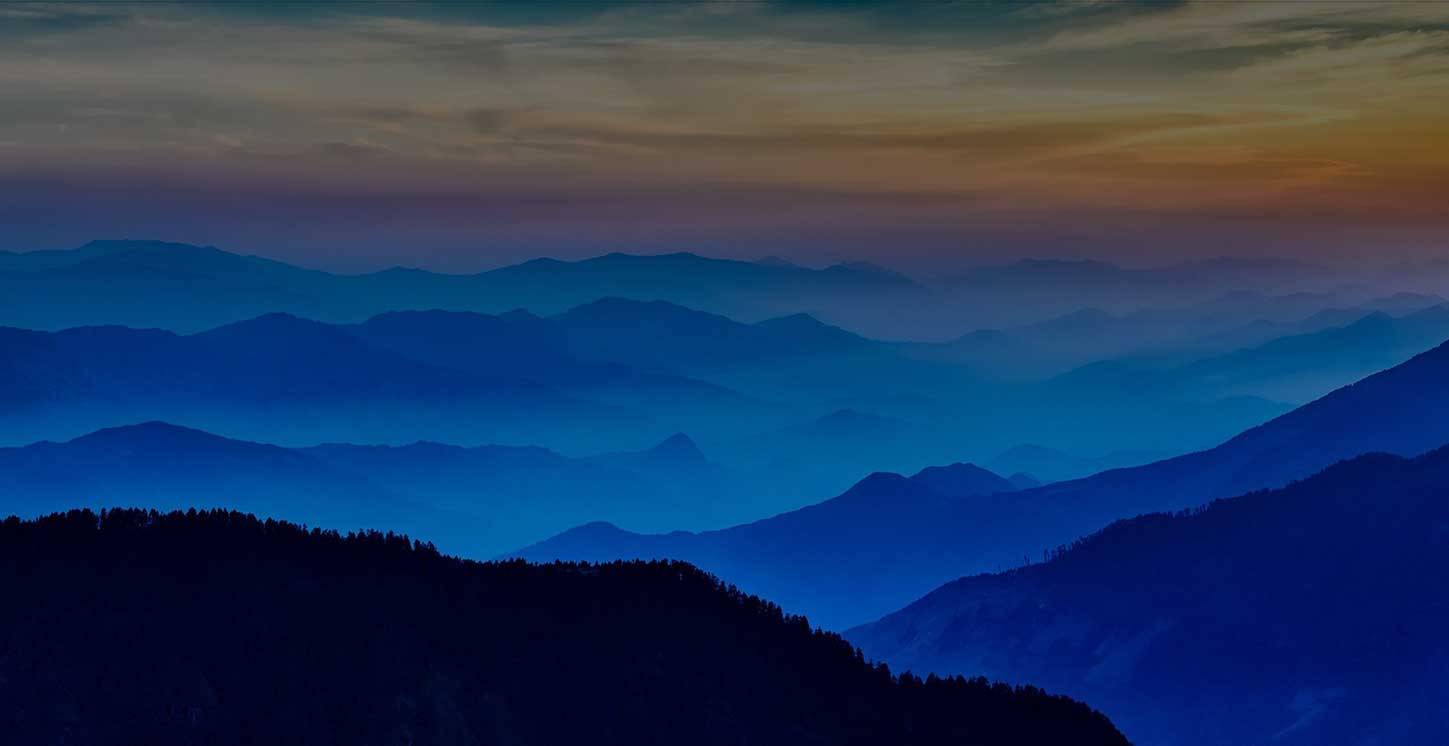
 +1-(765)-586-1210
+1-(765)-586-1210 +44-2030-2689-44
+44-2030-2689-44 +91 124 4361906
+91 124 4361906


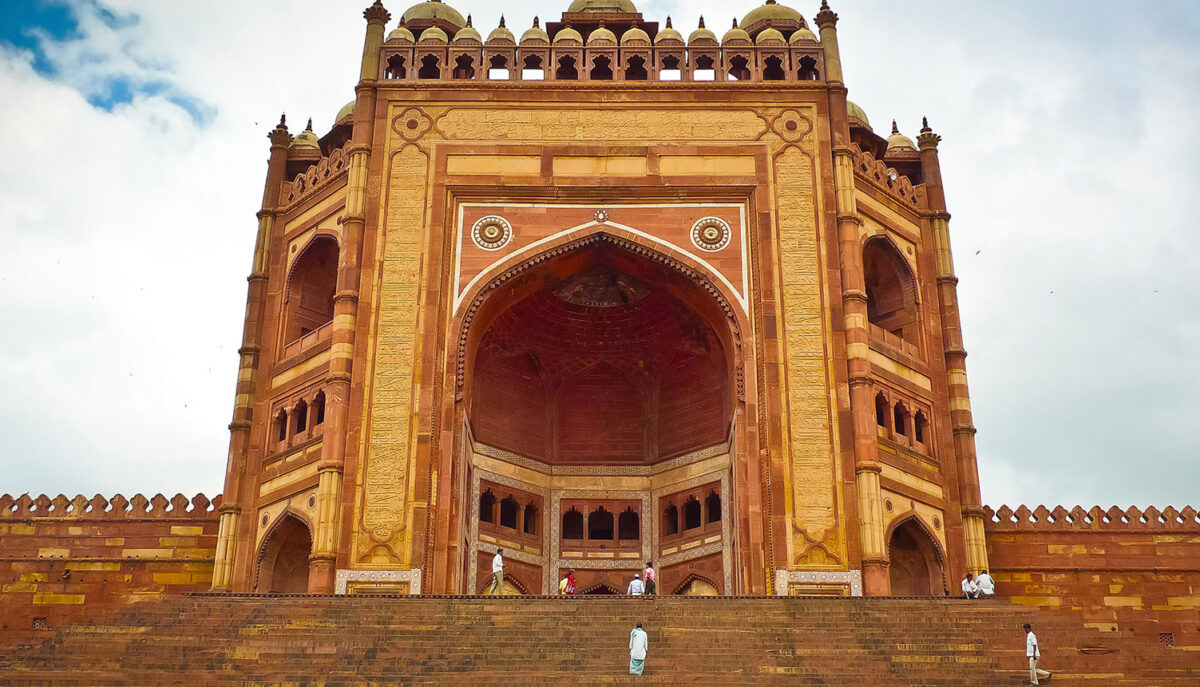
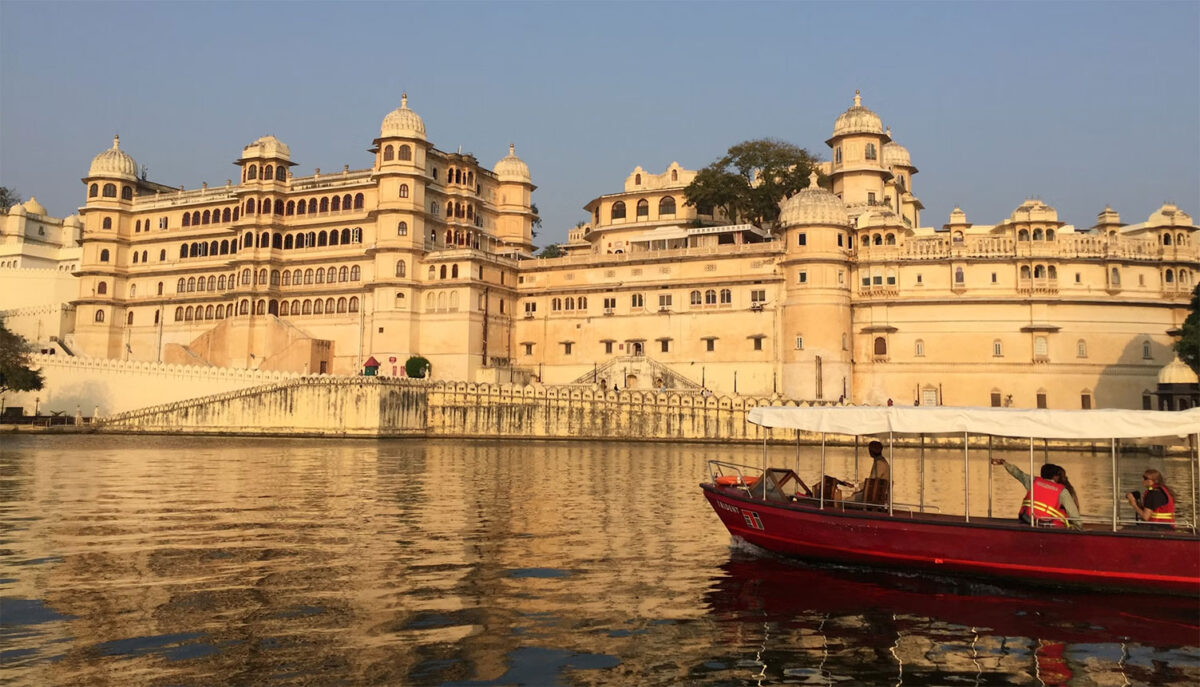

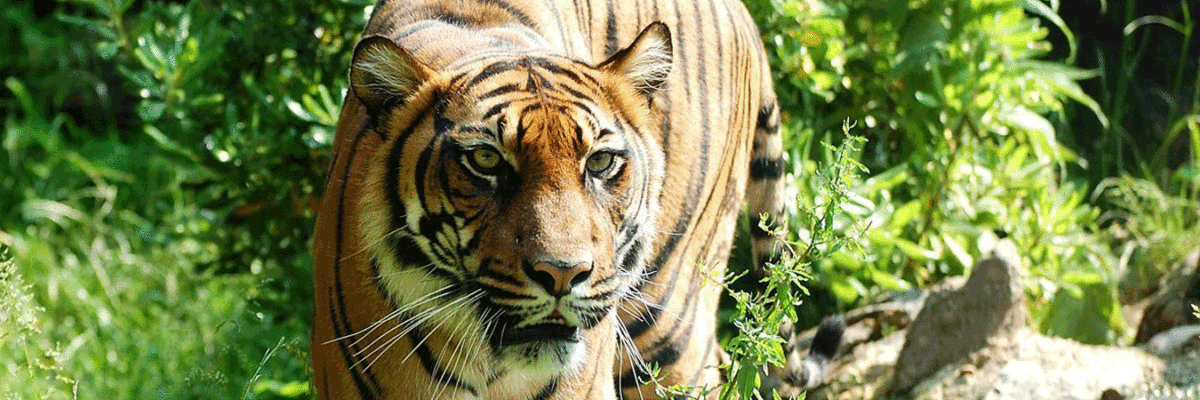
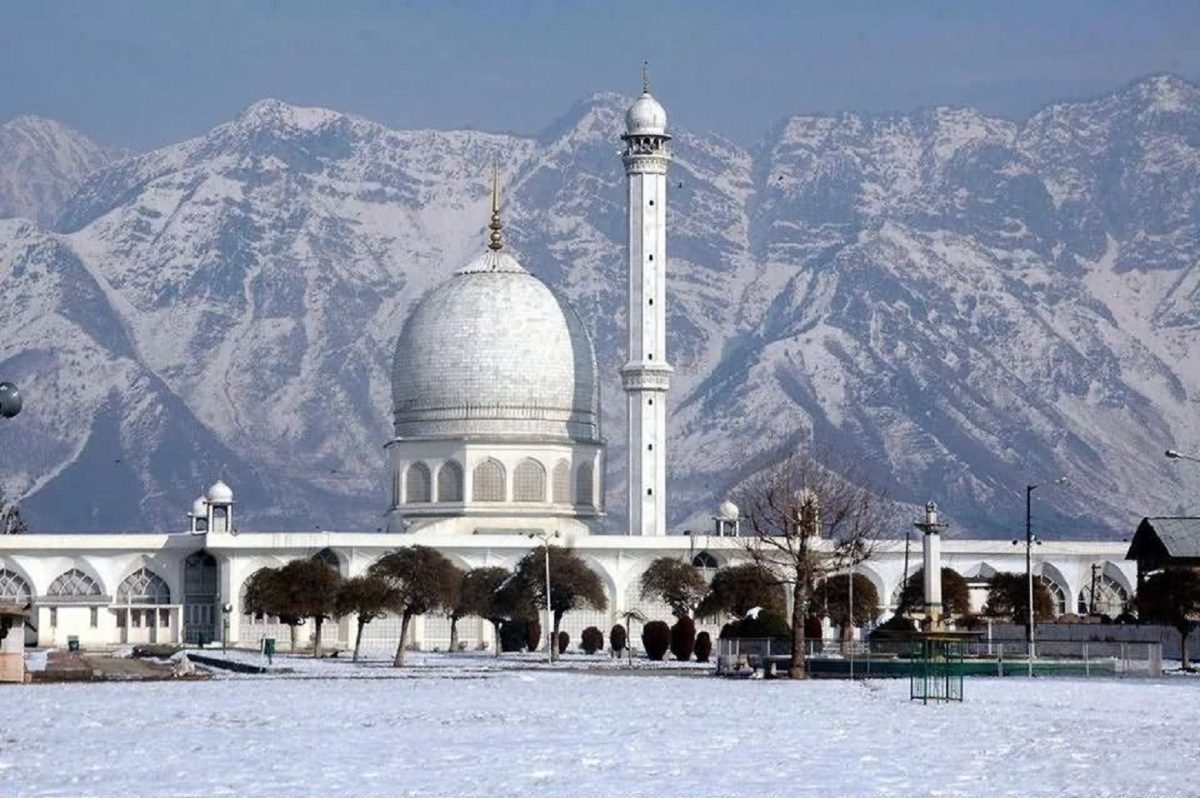
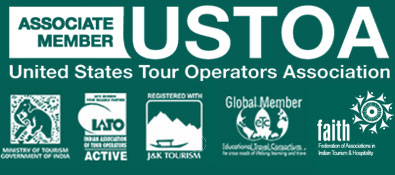

 +1-(765)-586-1210
+1-(765)-586-1210 +44-2030-2689-44
+44-2030-2689-44
